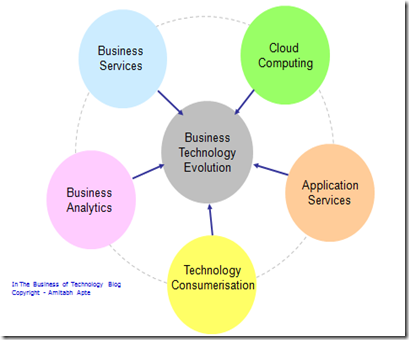“The New CIO Leader: setting the agenda and delivering results” (Harvard Business Press, 2005) by Marianne Broadbent (Associate Dean, Melbourne Business School & Gartner Fellow) and Ellen Kitzis (Group Vice President, Gartner Executive Programs) remains one of my favourite modern IT management books. This was one of the early books to challenge conventional IT management wisdom and proposes principles, maxim and rules of modern CIO engagement with business.
Ever a ready reference in my library, I was browsing through this over the weekend and could not resist listing “Ten New Priorities for the new CIO Leader”, here in my blog. Hopefully serves the purpose of ready reference for people in my network and my blog readers.
Lead, don’t just manage – Leadership and management are not the same; they are complementary. A modern CIO needs to both manage and lead with personal vision and a point of view about how information and IT can make your enterprise more effective.
Understand the fundamentals of your environment – The new CIO leader knows the industry and competitive environment.
Create a vision for how IT will build your organisation’s success – Ability to envision how to better IT-enable the business.
Shape and inform expectations for an IT-enabled enterprise – Heart of the modern CIO role; work closely with business colleagues to identify key business needs, strategies, and drivers then articulate the IT guidelines.
Create clear and appropriate IT governance – Effective governance enables the modern CIO to weave together business and IT strategies.
Weave business and IT strategy together – IT strategy means developing and actively managing IT portfolio to deliver success as measured by business colleagues.
Build a new IS organisation, one that is leaner and more focussed than its more traditional predecessor.
Develop and nurture a high-performing team in your IS organisation – Know the competencies required for the new IS organisation, one that relies much more on internal and external relationships and to recruit and train for effectiveness.
Manage the new enterprise and IT risks – A modern CIO is expected to proactively address and lead efforts to tackle ever-evolving threats such as cyber-terrorism, data privacy, and information security
.
Communicate IS performance in business-relevant language – The new CIO leader must know and communicate how IT is contributing to shareholder value and the IT value indicators that are directly linked to business value measures.
I will certainly recommend securing a copy and reading through chapters relevant to your area of priority, focus, responsibility or interest in strategic IT management. You won’t be disappointed unlike some other similar work.




